Want to know about 8 Union Territories of India? Well you have landed on the right article
As one of the largest federal republics in the world, India is a sovereign, socialist, secular, democratic, and parliamentary republic governed by parliament.
A union territory in India is one of the types of administrative divisions that are governed directly by the central government (union government).
Hence, it has been referred to as "union territory". According to the Constitution, the President of the Union is the head of the Union's executive.
An Administrator is assigned by the President to administer the Union Territories, which are under the authority of the President.
Due to the process of formation and development of all union territories, they have special rights and status.
In India, a subdivision with the status of "Union Territory '' is assigned to protect indigenous cultures and to also avoid political turmoil that may arise due to new settlers from a foreign colony who have entered the country for the first time.
Want to jump straight to my top picks? My favorite is Delhi and Chandigarh.
8 Union Territories of India
Known as a union of states, India is a constitutional republic governed by a parliamentary system with a sovereign, secular, and democratic government. The executive is headed by the President of the Union under the Constitution.
A representative of the Indian President is nominally responsible for the administration of the Union territories. India has a total of eight Union Territories.
As each of these urban areas varies greatly in terms of its demography, history, culture, dress, festivals, languages, etc, each UT of India has its unique characteristics.
We have covered name of all Union Territories of India with their unique characteristics:
Description of the Union Territories
1. Andaman and Nicobar Islands
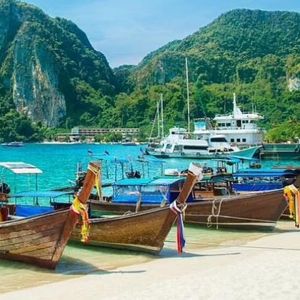
It is located between the latitudes of 6° and 14° north and the longitudes of 92° and 94° east for the Union Territory of the Andaman and Nicobar Islands.
A group of islands that lies between 10° north latitude, and 10° south latitude, is known as the Andaman Group of Islands, while the Nicobar Group of Islands is the group of islands that lies between 10° north latitude, and 10° south latitude.
In terms of climate, the islands can be classified as having a tropical, humid climate along the coast.
Rainfalls on the islands are due to both southwest and northeast monsoons, and the maximum amount of rainfall occurs between May and December.
Features
2. Dadra and Nagar Haveli and Daman and Diu
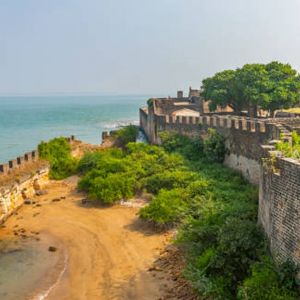
Several years ago, the union territory of Daman and Diu was combined with the union territory of Dadra and Nagar Haweli to form one common government territory.
Between 1954 and 1961, the Dadra and Nagar Haveli Territory operated almost independently as a part of the Free Dadra and Nagar Haveli Administration.
As a union territory, however, it was administered by the Government of India as of 11 August 1961.
Since then, the territory has once again been merged with the Indian Union. As a part of Portuguese India, these regions formed a large part of the country.
After the merger with the Indian Union in 1961, they became a part of India. There are a couple of districts in Gujarat, but Dadra is the smallest. The region between Maharashtra and Gujarat is called Nagar Haveli.
It is the beautiful scenery, the greenery, and the history that attract tourists and visitors from all over the world. Located at the entrance of the city, Vanganga Lake Garden offers a beautiful view of the lake.
Even after they became independent, they continued to be part of Portuguese India. The Union Territory of Goa amalgamated Daman and Diu into its territory in 1961.
Daman and Diu were later separated from the Union Territory of Goa in 1987, which made Daman and Diu a separate states. Daman and Diu are two parts of the Indian subcontinent that have Portuguese and Indian cultures mixed.
It is a popular tourist destination because of its beaches and scenic beauty, as well as the churches, and forts that are built by the Portuguese.
Features
3. Chandigarh
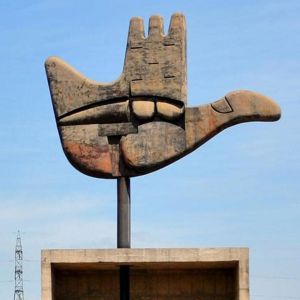
In terms of architecture, Chandigarh is one of the most modern and beautiful cities.
A picturesque setting of Shivalik hills nestles the city in a picturesque setting and it is well known as 'City Beautiful' due to its beauty.
This French architect, Le Corbusier, had designed the city as the ultimate expression of modern architecture and urban planning.
It was created as a Union Territory on 1 November 1966 and the area around it was designated as Chandigarh.
As the capital of both Punjab and Haryana, Chandigarh also serves as the seat of both states' legislatures. North and west it shares borders with Punjab, while on the east and south it shares borders with Haryana.
Features
4. Lakshadweep
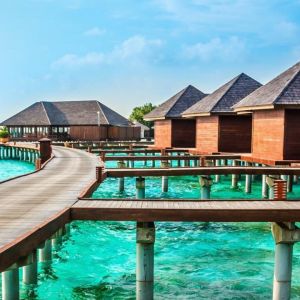
The history of the first inhabitants of these islands is little known. They are one of the smallest Union Territories of India.
It is believed that the islands of Amini, Andreotti, Kavaratti, and Agatti were the ones that were originally inhabited first.
An Arab trader introduced Islam to the islanders around the 14th century under the influence of the island's Hindu originals.
A single island territory was formed from the Island groupings in 1956, and since then, the islands have been administered directly by the Union Government through an Administrator.
There are three groups of islands, the Laccadives, Minicoy, and Amindivi, that were renamed the Lakshadweep group of islands in 1973.
This group of coral islands is formed by 12 atolls, 3 coral reefs, and submerged sand banks that make up Lakshadweep. There are a total of 27 coral islands, but only 11 are inhabited.
About 280 km to 480 km off the coast of Kerala, these reefs are scattered in the Arabian Sea.
Features
5. Puducherry
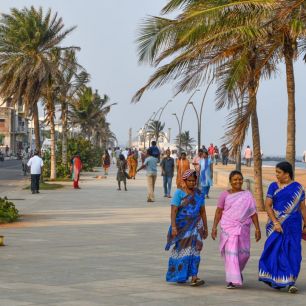
Puducherry consists of the old French settlements of Karaikal, Mahe, and Yanam in South India, as well as the former French establishment of Puducherry.
It is believed that the first French settlement in India was in Puducherry which served as their capital for many years.
For 138 years, it was under the rule of the French, and on 1 November 1954, it merged with the Indian Union.
The state is split into three parts by the Bay of Bengal on the east and Tamil Nadu on the three sides. Karaikal is located on the East Coast of India, approximately 150 km south of Puducherry.
There is a coastal town called Mahe located on the Western Ghats in the state of Malabar in north western Kerala, on the coast of the Arabian Sea. Mahe is only 70 km from the Calicut Airport, which is located in the state of Kerala.
A few kilometers from the airport of Visakhapatnam, Yanam is located in the East Godavari district of Andhra Pradesh and is about 200 km away from the capital of the state.
Features
6. Delhi
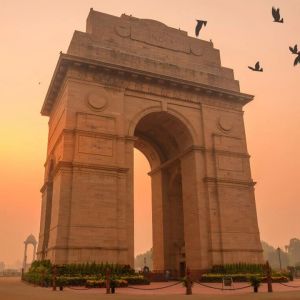
Throughout the epic Mahabharata, reference is made to Delhi on several occasions.
Over time, the control of this region has passed from one ruler/dynasty to another, beginning with the Mauryas, Pallavas, and Guptas of Central India, then it became part of the Turks and Afghanistanese in the 13th to the 15th centuries, and finally was controlled by the Mughals by the 16th century.
Delhi was established under British rule at the end of the 18th century and the beginning of the nineteenth century.
After the capital of India was shifted from Kolkata to Delhi in 1911, Delhi became the center of all activities in the country. Since 1956, Delhi has been a part of the Union of India.
A city that lies in the northern part of the country, Delhi is surrounded by the Haryana state on all sides except for its eastern border, where it is surrounded by the Uttar Pradesh state.
With the enactment of the National Capital Territory Act, in 1991, Delhi became the first city in the country to have a Legislative Assembly with the 69th constitutional amendment.
Features
7. Ladakh
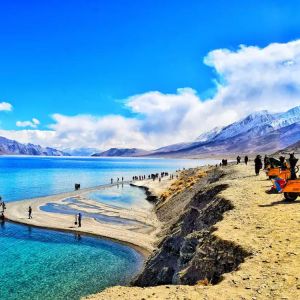
As of August 2019, Ladakh was reclassified as a union territory under the administration of the Indian government.
Before this, Ladakh was a part of a state in western India called Jammu and Kashmir. India's northern part is the region where the region resides.
Leh and Kargil are the two districts that makeup Ladakh. There is a similarity between Ladakhi culture and Tibetan culture.
Ladakhi is the principal language spoken in Ladakh, while Tibetan is the principal language spoken in Tibet. Both Ladakhi and Tibetan food can be found in Ladakh.
Tourism plays an important role in the economy of this country. It can be seen Ladakh has many attractions to offer to tourists, including Pangong Lake, Magnetic Hill, Zanskar Valley, monasteries, and Leh Palace.
In addition, mountain passes at high altitudes are present in the area.
Features
8. Jammu and Kashmir
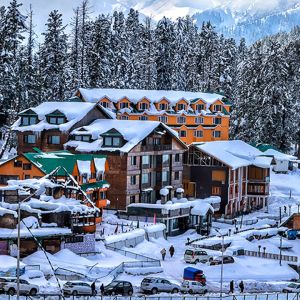
There has been a division of Jammu and Kashmir into the two union territories of Ladakh and J&K, effective as of August 27, 2019.
Under the constitution of India, Jammu and Kashmir are to be as "union territory " as Delhi and Puducherry, with their legislature.
Jammu and Kashmir have been granted the special status provided by Article 370 of the Indian Constitution as part of their special autonomy.
Among the measures proposed in the Act is the re-constitution of Jammu and Kashmir state into two union territories, Jammu and Kashmir and Ladakh. Once the Act is passed, it will take effect on October 31, 2019.
There is a lot of mountainous terrain in this state. Among the vegetation are thorn scrubs and grasses. There are terraced slopes where agriculture is practiced. Rice is the most important crop.
A variety of crops are also cultivated according to the seasons, including barley, millet, cotton, pulses, corn, wheat, and tobacco. A variety of crops are also grown there, including rice, potatoes, and almonds.
There are snow-capped mountains and glaciers in Jammu & Kashmir, often known as the paradise on earth for its breathtaking beauty.
Lakes, valleys, meadows, and evergreen forests can all be found in abundance in this region, thanks to its natural splendor. Amarnath and Vaishno Devi are centers of pilgrimage, and both are located in eastern India.
The most beautiful places to visit in the Himalayas are Gulmarg, Dal Lake, Shalimar Bagh, and Khardung La pass.
Features
Conclusion
The States Reorganisation Commission was mandated to recommend, during 1956 discussions concerning the reorganization of states, the creation of a separate category for these territories due to the fact they neither conform to the model of a state nor follow uniform patterns of governance.
It has become clear that these economically unbalanced, financially weak, and administratively and politically chaotic territories cannot depend heavily on the Union government if they are to survive as separate administrative units.There are many reasons that union territories were formed.
I hope you liked our article on 8 Union Territories of India, if you have any comments or suggestions do share them in the comments below.
frequently asked question
Q1. Are there 8 or 9 Union territories?
There are 28 states in the country, as well as 8 federally recognized territories. A President has the power to appoint an Administrator for the Union Territories. The President appoints the Administrator on his/her behalf.
There are a large number of states and union territories in India, and each of them has its own specific culture, history, demography, festivals, dress, language, etc.
Q2. Which is the 8th union territory of India?
Earlier this month, the Indian government announced its plans to merge the two union territories and the three union territories of Dadra and Nagar Haveli, Daman and Diu, and Dahora and Diu, into one large territory.
The Union Territory of Dadra & Nagar Haveli and Daman & Diu is expected to be renamed into Dadra & Nagar Haveli and Daman & Diu.
Q3. Which is smallest union territory?
Lakshadweep, the smallest union territory of India, is an archipelago of 36 islands covering a surface area of 32 square kilometers.
An island nation consisting of 12 atolls, three reefs, five submerged banks, and ten inhabited islands, it is a unit of the Union Territory and resides within a single district.
Also Read: Check out my reviews of the best image editing software, the top choices for video editing software, and my full guide to start a blog for beginners.


